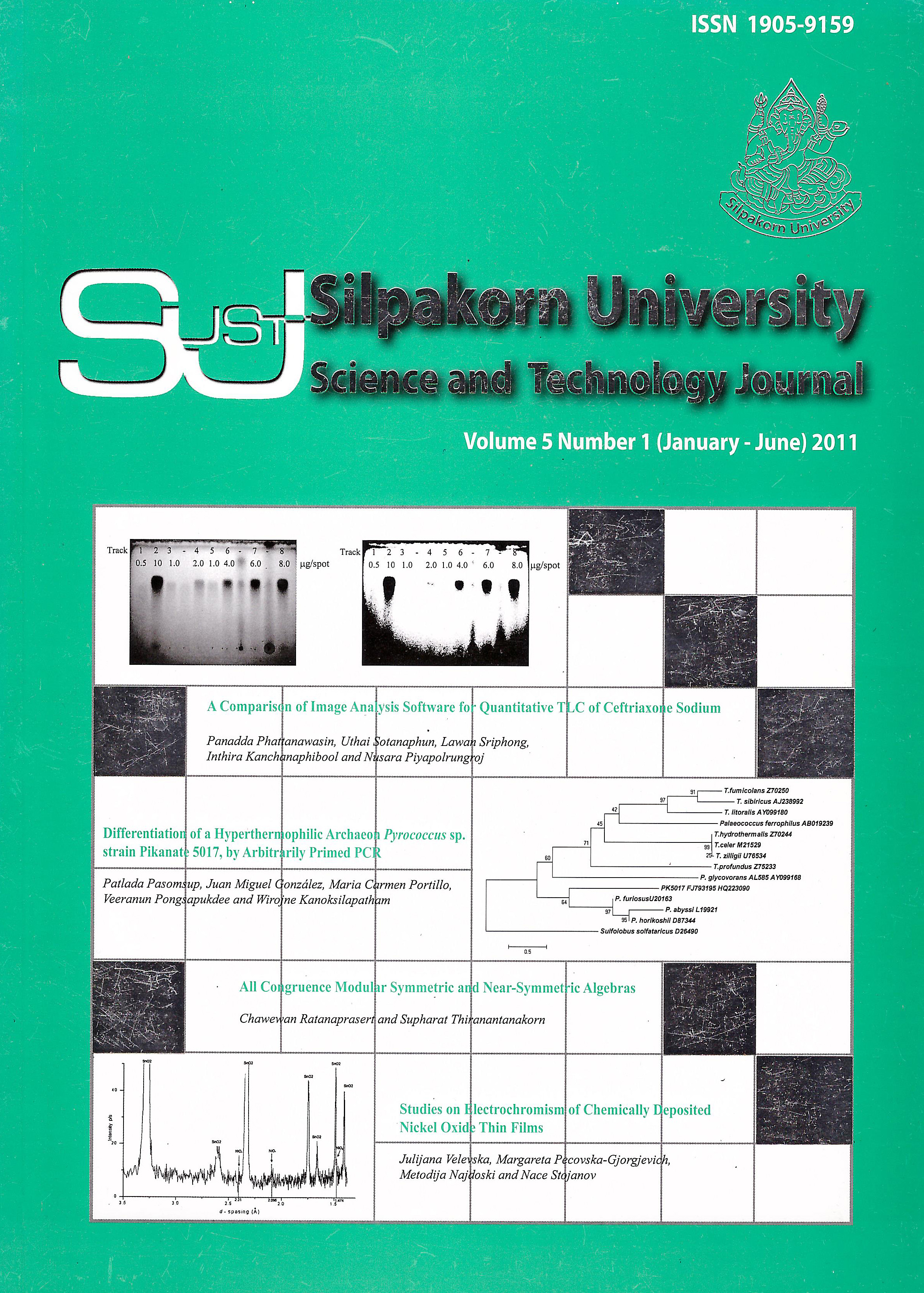All Congruence Modular Symmetric and Near-Symmetric Algebras
Main Article Content
Abstract
For a unary operation f on a finite set A , let denote λ ( f ) the least non-negative integer with Im f λ ( f ) = Im f λ ( f )+1 which is called the pre-period of f . K. Denecke and S. L. Wismath have characterizedall operations f on A with λ ( f ) = A −1 and prove that λ ( f ) = A −1 if and only if there exists a d ∈ Asuch that A = {d, f (d), f 2 (d),... , f |A|-1(d)} where f |A|-1(d) = f |A| (d). C. Ratanaprasert and K. Deneckehave characterized all operations f on A with λ ( f ) = | A | −2 for all | A | ≥ 3; and have characterizedall equivalence relations on A which are invariant under f with these long pre-periods.In the paper, we study finite unary algebras A = (A; f ) with λ ( f ) ∈ {0, 1} for | A | ≥ 3 which are called symmetric algebras and near-symmetric algebras, respectively. We characterizeall operations f whose A is congruence modular. We prove that a symmetric algebra A iscongruence modular if and only if the lattice ConA of all congruence relations is either a product of chains or a linear sum of a product of chains with one element top or a M3 − head lattice; and anear-symmetric algebra A is congruence modular if and only if ConA is one of the followings: 2× P, 2×(P⊕1), 2× L, M3 × P, M3 ×(P⊕1), or M3 × L where P denote a product of chains and L is a M3 − head lattice.
Downloads
Article Details
References
Denecke, K. and Wismath, S. L. (2002). Universal Algebra and Applications in Theoretical Computer Science. New York: Chapman & Hall.
Jakubikova, D. and Kosice (1982). On congruence relations of unary algebras I. Czechoslovak Mathematical Journal, 32(107): 437-459.
Jakubikova, D. and Kosice (1983). On congruence relations of unary algebras I. Czechoslovak Mathematical Journal, 33(108): 448-466.
McKenzie, R. and Hobby, D. (1998). The structure of finite algebras. Contemporary Mathematics vol. 76, Providence, Rhode Island.
Ratanaprasert, C. and Denecke, K. (2008). Unary operations with long pre-periods. Discrete Mathematics, 308: 4998-5005.

